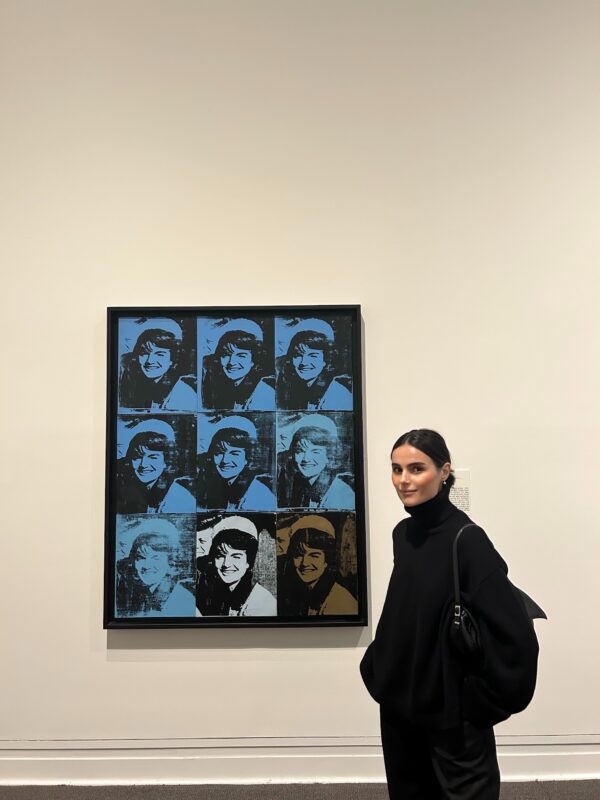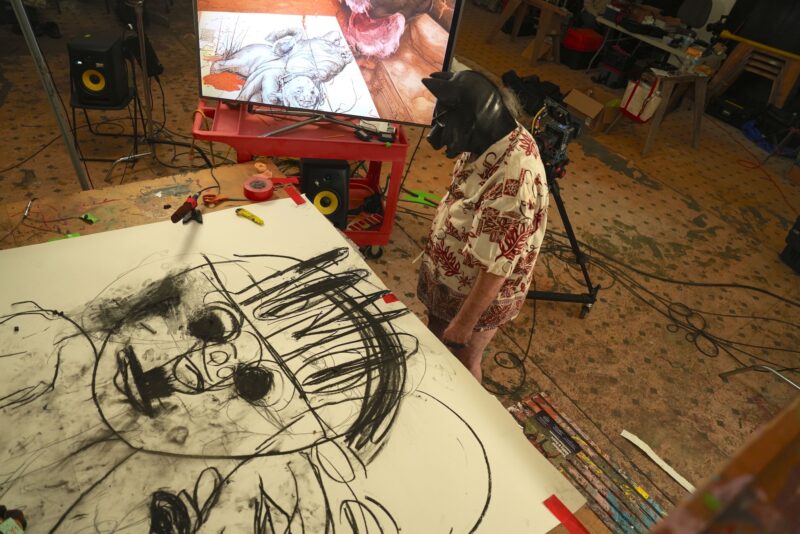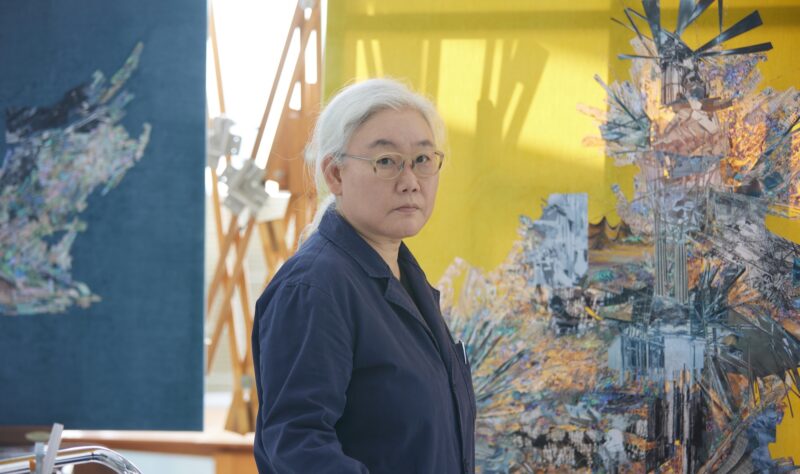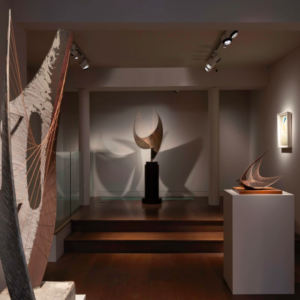Iwan Wirth, Manuela Wirth, and Marc Payot, co-presidents of Hauser & Wirth have announced the gallery’s representation of the François Morellet Estate. The first project with the Estate will be an exhibition of the pioneering French artist’s work at Hauser & Wirth in New York in January 2021.
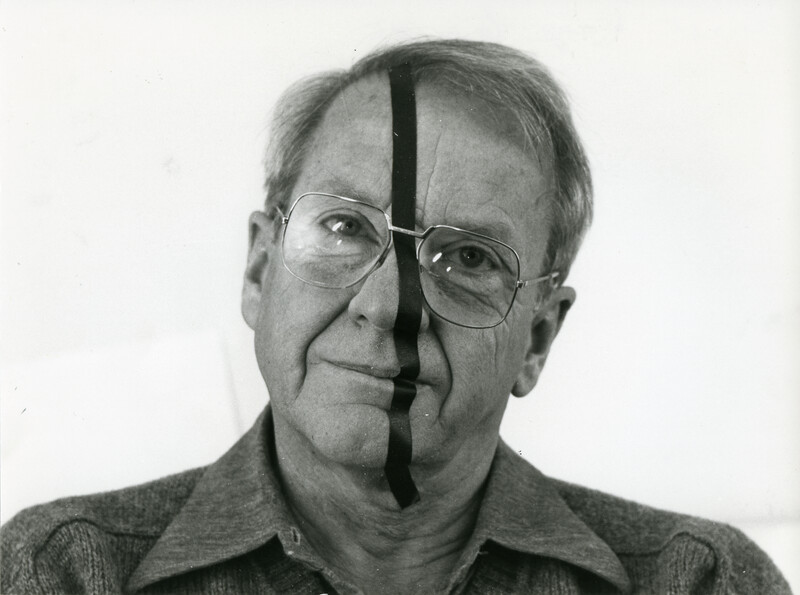
François Morellet (1926 – 2016), a prolific self-taught painter, sculptor, and installation artist, developed a radical approach to geometric abstraction during a career spanning more than six decades. His object-based paintings, neon and architectural installations, and site-specific works explored the creative potential of kinetic and pre-established systems, challenging the viewer’s understanding of perception and the physical picture plane. Working primarily with basic geometric forms, Morellet was committed to a methodology of rigorous objectivity and personal detachment. Incorporating steel, neon tubes, iron, adhesive tape, wire mesh and wood into his work, he strove to dismantle traditional hierarchies and embraced the elements of randomness and chance. Morellet’s playfulness and wit are also revealed in the titles of his works, which often include tongue-in-cheek puns, parody, and wordplay.
Hauser & Wirth’s representation of the artist will be in collaboration with the Paris-based gallery, kamel mennour.
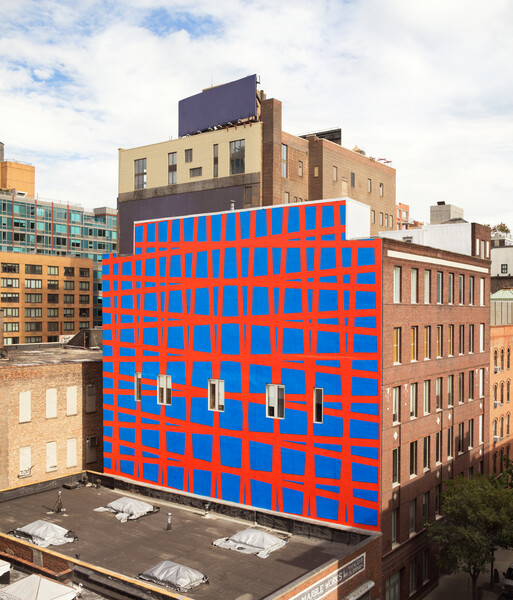
‘We are thrilled to begin working with the François Morellet Estate. Hauser & Wirth has a longstanding commitment to extraordinary artists of the 20th century whose oeuvres have been underappreciated in a contemporary context – artists’ artists whose breakthroughs resonate with remarkable force today. Morellet is just such an artist. His work has strong ties to many others in our program, including fellow members of the European avant-garde like Max Bill, Piero Manzoni, Jean Arp and Sophie Taeuber-Arp. And like the late Lygia Pape, another artist in our program, Morellet had an uncanny ability to create theoretically complex and original art through deceptively simple means. He anticipated the ideas of Conceptual art through his lifelong critique of notions of originality and authorship. But he also infused his work with irreverence, irony, and joyful lightness that feel so fresh and relevant in this moment. We are honored to work with the Morellet family and kamel mennour to promote scholarship for and awareness of this visionary figure.’
Marc Payot, President of Hauser & Wirth,
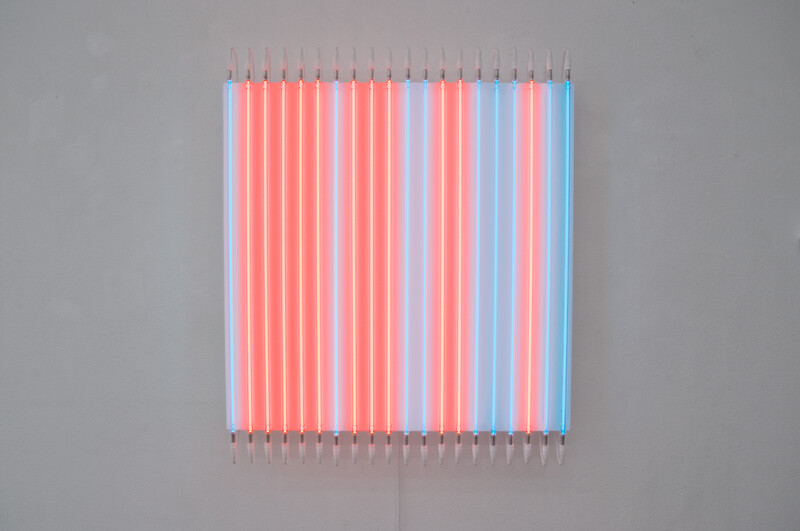
Hauser & Wirth’s inaugural exhibition of the artist’s work, ‘François Morellet. In-Coherent,’ will be presented at 32 East 69th Street in New York from 26th January through 7th April, 2021. Organized with Olivier Renaud-Clément, it will feature key abstract geometric paintings, neon works and wall drawings dating from 1953 to 2013. The exhibition will explore the full breadth of Morellet’s career and artistic practice, bringing further international awareness to the wide-ranging output and lasting influence of this remarkable artist.
About the Artist
Born in Cholet, France, where he lived and worked for the entirety of his life, Morellet studied literature in Paris before returning to run his family-owned toy factory until 1975. This allowed him financial independence while providing exposure to fabricators and production techniques that came to inform his practice. Morellet first created figurative paintings in the 1940s before turning to abstraction after a highly influential trip to Brazil in 1950, where he discovered Concrete art and the work of Max Bill.
In addition to Bill, Jean Arp and Theo van Doesburg became defining influences for the artist, alongside the geometric patterns, anonymous beauty and precision of the Islamic decorative art he encountered when visiting the Alhambra in Spain in 1952. As a result, he developed works based on simple systems and rules, which removed the subjectivity of the artist and dismantled conventional notions of composition. As Morellet stated, he turned his artistic endeavors into ‘an adventure, as frivolous as it is systematic.’ In the late 1950s he discovered the ‘Duo-collages’ of Jean Arp and Sophie Taeuber-Arp through his friend Ellsworth Kelly, which prompted him to introduce chance as a central principle, creating works based on random numbers found in his local phone directory or the infinite sequence of decimals of the number pi.
Morellet was a founding member of the Groupe de Recherche d’Art Visuel (GRAV), an experimental artist’s collaborative that emerged in France in the early 1960s. The group explored the possibilities of Kinetic Art and the viewer’s active engagement, while demystifying the romantic notion of the individual genius artist. Prior to the formation of GRAV, Piero Manzoni invited Morellet and several of his collaborators to participate in an exhibition at his Galleria Azimuth in Milan, where their works were presented without the artists’ individual names indicated, at the instigation of François Morellet.
Morellet’s work has been included in a number of important international group exhibitions including Documenta in Kassel, Germany (1964 [with GRAV], 1968, and 1977), and the Venice Biennale (1970 and 1990). In 1971 his first solo museum exhibition was organized by Stedelijk Van Abbemuseum in Eindhoven, the Netherlands and later traveled throughout Europe. Other major retrospectives of Morellet’s work have been held at the Nationalgalerie in Berlin (1977), the Centre Pompidou (1986 and 2011) and the Galerie nationale du Jeu de Paume (2000 – 2001) in Paris. In 2010, Morellet was the second artist to exhibit in his lifetime at the Louvre Museum with the inauguration of a permanent site-specific installation titled ‘L’esprit d’escalier’. His work is represented in major public collections including the Centre Pompidou, Dia Art Foundation, Los Angeles Museum of Art, The Museum of Modern Art, New York, the Seoul Museum of Art, Tate Britain, the Tel Aviv Museum, the Kunsthaus Zurich and the Nationalgalerie Berlin.
Morellet was first introduced to an American audience in 1965 as part of the landmark exhibition ‘The Responsive Eye’ at the Museum of Modern Art in New York. He was later the subject of a North American retrospective in 1984 – 1985, traveling to the Albright-Knox Art Gallery in Buffalo, New York, Musée d’art contemporain in Montreal, Canada, Brooklyn Museum, Brooklyn, New York, and Center for the Fine Arts in Miami, Florida. In 2017, Dia Art Foundation presented the first major survey of Morellet’s work in the United States in over three decades, curated by independent curator Béatrice Gross with Dia’s Megan Holly Witko.
